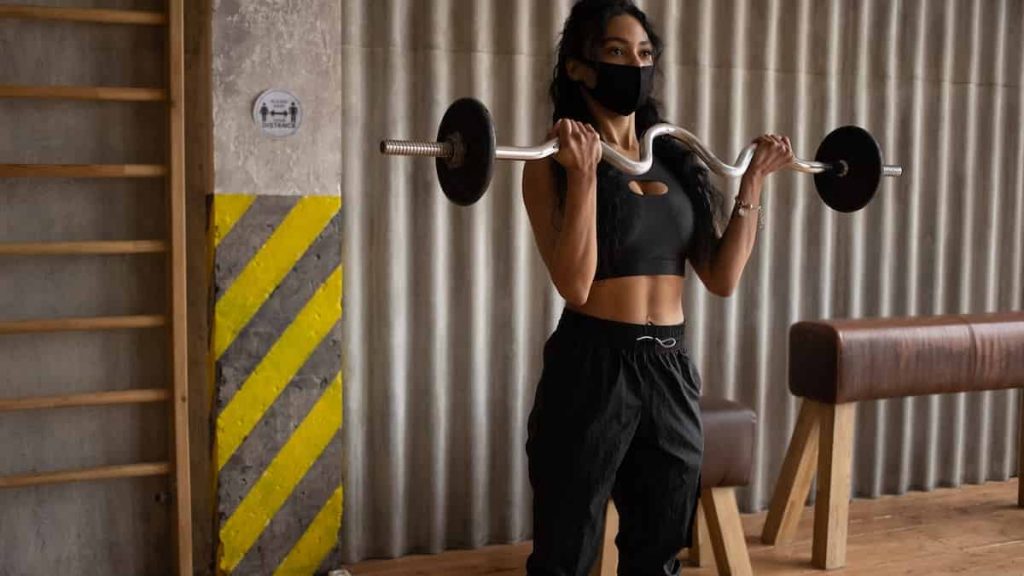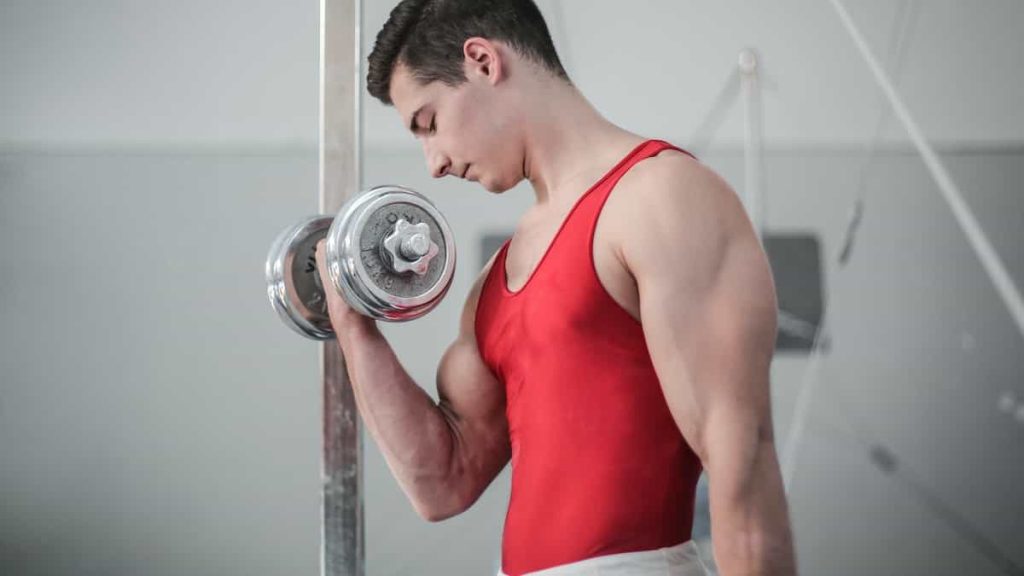Here is your complete guide to workout routine for biceps.
Introduction to Workout Routine for Biceps
What is the best workout routine for biceps? Welcome to the ultimate guide on sculpting strong and defined biceps! When it comes to upper body strength and aesthetics, well-developed biceps are a key component. Not only do they enhance your overall physique, but they also play a crucial role in various upper body movements. In this article, we will provide you with a comprehensive workout routine specifically designed to target your biceps and help you achieve impressive results. Get ready to flex those muscles and unleash the power of your arms! Here is your complete guide to workout routine for biceps.
Understanding Biceps Anatomy
Before we dive into the workout routine, let’s briefly explore the anatomy of the biceps. The biceps brachii muscle, commonly known as the biceps, consists of two heads: the long head and the short head. The biceps muscle runs along the front of your upper arm, connecting the shoulder joint to the elbow joint. Its primary function is to flex the elbow and supinate the forearm. Now that we have a basic understanding of the biceps, let’s get started with our workout routine.
Warm-Up and Stretching
Before engaging in any intense physical activity, it’s essential to warm up and stretch your muscles properly. This helps prevent injuries and prepares your biceps for an intense workout. Begin with a few minutes of light cardio exercise, such as jogging or jumping jacks, to increase blood flow to the muscles. Follow this with dynamic stretches that target the biceps, such as arm circles and arm swings. These movements will loosen up the muscles, increase their flexibility, and enhance their responsiveness to the upcoming exercises.
Workout Routine for Biceps Program
Below is an example of a biceps workout program that includes different exercises and their recommended repetitions for optimal biceps development:
| Exercise | Repetitions |
|---|---|
| Barbell Curls | 3 sets of 8-12 repetitions |
| Dumbbell Hammer Curls | 3 sets of 10-15 repetitions |
| Preacher Curls | 3 sets of 8-12 repetitions |
| Chin-Ups | 3 sets of 8-12 repetitions |
| Resistance Band Curls | 3 sets of 10-15 repetitions |
This workout program offers a combination of barbell, dumbbell, bodyweight, and resistance band exercises to target different aspects of your biceps. Perform each exercise with proper form and control, focusing on the recommended number of sets and repetitions. Remember, these repetitions are just guidelines, and you can adjust them based on your fitness level and personal preferences.
Key Exercises for Biceps Development: Workout Routine for Biceps
Barbell Exercises
Barbell Curls
Barbell curls are a classic exercise for biceps development. To perform this exercise, stand with your feet shoulder-width apart, holding a barbell with an underhand grip. Keep your elbows close to your sides and curl the barbell up towards your shoulders while contracting your biceps. Slowly lower the barbell back to the starting position. Remember to maintain proper form and technique throughout the movement. To target different muscle fibers, you can try variations such as wide grip curls or incline curls. Aim for 3-4 sets of 8-12 repetitions to optimize your results.

Preacher Curls
Preacher curls are excellent for targeting the biceps peak and enhancing the overall aesthetics of your arms. If you don’t have access to a preacher bench, you can use a stability ball or a flat bench with an inclined backrest. Position your upper arms against the preacher bench and hold a barbell with an underhand grip. Slowly curl the barbell upwards, focusing on squeezing your biceps at the top of the movement. Lower the barbell in a controlled manner and repeat. Maintain proper form and avoid using momentum to swing the weight. Remember, it’s quality over quantity.
Dumbbell Exercises: Workout Routine for Biceps
Alternating Dumbbell Curls
Unilateral exercises like alternating dumbbell curls help correct muscle imbalances and engage your biceps more effectively. Stand with your feet shoulder-width apart, holding a dumbbell in each hand. Curl one arm up towards your shoulder while keeping the other arm stationary. Squeeze your biceps at the top, then lower the dumbbell in a controlled manner. Repeat the movement with the opposite arm. Focus on maintaining stability and maximizing muscle activation throughout the exercise. Vary your grip by using a neutral or hammer grip to target different parts of the biceps.

Hammer Curls
Hammer curls provide a unique twist to your biceps workout by engaging both the biceps and brachialis muscles. Stand with your feet shoulder-width apart, holding a dumbbell in each hand with a neutral grip (palms facing your body). Curl the dumbbells up towards your shoulders, focusing on the contraction in your biceps and brachialis. Lower the dumbbells back down in a controlled manner. By incorporating hammer curls into your routine, you’ll achieve a well-rounded arm development. Aim for 3-4 sets of 8-12 repetitions with proper form and technique.
Bodyweight and Resistance Band Exercises
Chin-Ups
Chin-ups are an excellent bodyweight exercise for targeting your biceps while also engaging your back muscles. Find a horizontal bar or use a pull-up bar if available. Grab the bar with an underhand grip (palms facing you) and hang with your arms fully extended. Pull yourself up by flexing your elbows until your chin clears the bar. Slowly lower yourself back down to the starting position and repeat. If you’re a beginner, you can use an assisted pull-up machine or resistance bands to gradually increase your strength. Aim for 3-4 sets of 8-12 repetitions, focusing on controlled movements.
Resistance Band Curls
Resistance bands are versatile tools for biceps training, especially for those who prefer home workouts or have limited access to equipment. Step on the band with one foot and grasp the other end with an underhand grip. Curl your hands up towards your shoulders, squeezing your biceps at the top of the movement. Slowly lower your hands back down and repeat. You can adjust the tension of the band to increase or decrease the resistance, allowing for progressive overload. Ensure proper form and tension throughout the exercise to maximize its effectiveness.
Incorporating Biceps Training into Your Workout Routine
Now that we have covered a range of biceps exercises, let’s discuss how to incorporate them into your workout routine. The frequency and volume of biceps training depend on your individual goals and fitness levels. For beginners, two biceps workouts per week should be sufficient. Intermediate and advanced individuals can increase the frequency to three times per week, ensuring adequate rest and recovery between sessions. You can integrate biceps exercises into an upper body or full-body workout routine by scheduling them after compound exercises like bench presses or rows. Remember to prioritize form, progressive overload, and allow for proper recovery to achieve optimal muscle growth.
Nutrition and Supplementation Tips for Workout Routine for Biceps
While a well-structured workout routine is vital for biceps development, proper nutrition plays an equally important role. Ensure you have a balanced diet that includes lean protein sources, complex carbohydrates, healthy fats, and an abundance of fruits and vegetables. Protein is crucial for muscle repair and growth, so aim to consume enough protein from sources like lean meats, eggs, dairy, and plant-based options. Additionally, consider incorporating supplements that support muscle recovery and growth, such as whey protein, creatine, and branched-chain amino acids (BCAAs). Remember to consult with a healthcare professional before adding any supplements to your regimen.
Avoiding Common Mistakes and Injury Prevention
To maximize your biceps training, it’s essential to avoid common mistakes and prioritize injury prevention. One common mistake is using excessive momentum to lift heavy weights, which takes the focus away from the biceps and increases the risk of injury. Instead, concentrate on slow and controlled movements, emphasizing the contraction in your biceps. Additionally, listen to your body and adjust the intensity and volume of your workouts accordingly. Overtraining can lead to fatigue, decreased performance, and an increased risk of injury. Incorporate rest days into your routine to allow for proper recovery and muscle growth.
Frequently Asked Questions (FAQs) about Workout Routine for Biceps
What should I workout on bicep day?
On bicep day, the primary focus should be on exercises that target the biceps muscles. Some key exercises you can include are barbell curls, dumbbell curls, preacher curls, chin-ups, and hammer curls. These exercises engage the biceps from various angles, promoting overall biceps development. It’s important to choose exercises that you feel comfortable with and that challenge your muscles effectively.
Read More About The Ultimate Guide to Ginger: Nutrition Facts and Health Benefits.
How many exercises should I do for bicep day?
The number of exercises you should do for bicep day depends on your fitness level and overall workout routine. Generally, it is recommended to perform 2-4 exercises specifically targeting the biceps. This allows for sufficient stimulation and workload for the muscles without overtraining them. Remember to focus on quality over quantity and prioritize proper form and technique in each exercise.
Read More About Do Saunas Help to Lose Weight?
Can I train biceps 3 times a week?
Training biceps three times a week is feasible, especially for intermediate and advanced individuals. However, it’s crucial to ensure proper recovery between sessions. Biceps are relatively smaller muscles that recover faster compared to larger muscle groups. If you decide to train biceps three times a week, consider alternating between higher intensity and lower intensity workouts to allow for sufficient rest and recovery. Pay attention to any signs of overtraining, such as persistent muscle soreness or decreased performance, and adjust your training frequency accordingly.
Read More About What is The Benefit of Papaya.
Is 2 bicep exercises enough?
Performing two bicep exercises can be sufficient, particularly if you focus on compound exercises that engage the biceps along with other muscle groups. However, it’s important to choose exercises that target different aspects of the biceps for well-rounded development. If you prefer a more focused bicep workout, you can include additional isolation exercises to target different parts of the biceps. Remember, the quality of your exercises and the effort you put into each repetition matter more than the sheer number of exercises. Focus on intensity and proper form to maximize your results.
Read More About Carrots for Weight Loss.
Conclusion
Congratulations! You have now gained the knowledge and tools to embark on an effective biceps workout routine. By incorporating the exercises outlined in this article and following proper form, technique, and progressive overload principles, you are on your way to sculpting strong and defined arms. Remember, consistency and patience are key. Stick to your routine, fuel your body with proper nutrition, and prioritize recovery. Keep pushing yourself, and watch as your biceps become a symbol of your hard work and dedication. Get ready to show off those impressive arms with confidence!

